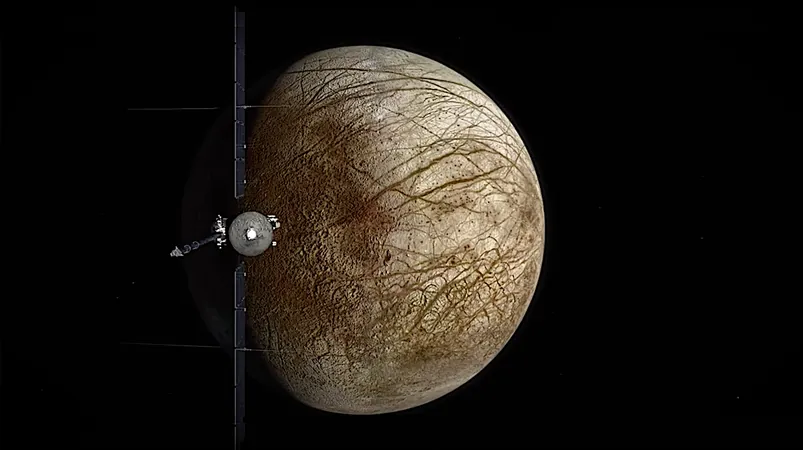
Ensuring Europa’s Icy Moons Remain Untouched: A Deep Dive into the Europa Clipper's Planetary Protection Strategy
2024-11-01
Author: Arjun
Introduction
As NASA prepares for its ambitious Europa Clipper mission, a crucial focus is on protecting Jupiter's enigmatic icy moons from potential biological contamination originating from Earth. The primary objective of the Europa Clipper mission is to explore Europa, one of Jupiter's most intriguing moons, to determine its potential for harboring life.
Planetary Protection Requirements
NASA has outlined stringent Planetary Protection (PP) requirements under the NASA Procedural Requirement (NPR) 8020.12D, which states that the likelihood of contaminating any liquid water environment must remain below a threshold of 1 x 10^-4 per mission. In this context, contamination refers specifically to the introduction of even a single viable terrestrial microorganism. Given the complexity of space missions and the potential for unforeseen events, this goal necessitates a sophisticated probabilistic risk assessment (PRA).
End-to-End Probabilistic Risk Assessment
The Europa Clipper team at NASA’s Jet Propulsion Laboratory is employing an end-to-end probabilistic risk assessment to ensure compliance with these requirements. This assessment conservatively evaluates unexpected scenarios that could lead to the unintentional contamination of Europa's ocean.
Modeling Spacecraft Failure and Geological Resurfacing Rates
Key to this assessment is modeling various spacecraft failure scenarios, estimating the geological resurfacing rates of icy bodies, and evaluating the chances of biological survival as the hardware makes its journey through space to the subsurface ocean beneath Europa's icy crust. The central aim is to establish the necessary level of bioburden reduction needed before launch to meet the NPR’s risk threshold while managing the overall mission risk.
Challenges in Microbial Reduction
Past attempts at mathematical modeling for microbial reduction have often fallen short, either being too stringent or too lenient, which could punish the mission with elevated risks. For instance, if relying solely on sterilization protocols to achieve compliance, the PRA indicates a staggering 13-log reduction of microbial life would be required prelaunch. However, this drastic measure poses other issues; many spaceflight components are not designed to withstand such intense sterilization, which could compromise their reliability and effectiveness.
A New Approach to Planetary Protection
Instead, the Europa Clipper project aims not necessarily to prove that the spacecraft is sterile, but to validate that the chances of unintentionally impacting Europa and potentially delivering a fragment of hardware to its surface—where resurfaces could occur within the next millennium—are sufficiently minimal.
Implications for Future Missions
This new approach refines previous models by providing a detailed and mathematically sound mechanism for assessing the probability of carrying viable biological contaminants between planetary bodies. The insights gained from this PRA will not only support Europa Clipper but will also pave the way for future missions requiring similar planetary protection assessments, such as the upcoming Europa Lander and Mars Sample Return missions.
Conclusion
Moreover, as our understanding of astrobiology expands, these efforts to preserve celestial bodies from contamination take on an increasingly important role in the broader dialogue about humanity's responsibility in the cosmos.
Stay Tuned for Updates
Stay tuned for more updates on the groundbreaking Europa Clipper mission, as NASA inches closer to unveiling the mysteries that lie beneath Europa's icy surface!
 Brasil (PT)
Brasil (PT)
 Canada (EN)
Canada (EN)
 Chile (ES)
Chile (ES)
 España (ES)
España (ES)
 France (FR)
France (FR)
 Hong Kong (EN)
Hong Kong (EN)
 Italia (IT)
Italia (IT)
 日本 (JA)
日本 (JA)
 Magyarország (HU)
Magyarország (HU)
 Norge (NO)
Norge (NO)
 Polska (PL)
Polska (PL)
 Schweiz (DE)
Schweiz (DE)
 Singapore (EN)
Singapore (EN)
 Sverige (SV)
Sverige (SV)
 Suomi (FI)
Suomi (FI)
 Türkiye (TR)
Türkiye (TR)